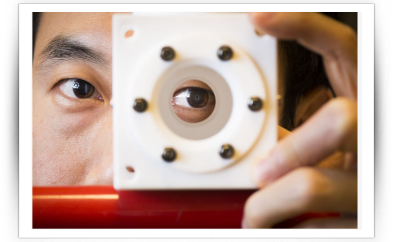Researchers at Linköping University, Sweden, are working to develop a method to convert water and carbon dioxide to the renewable energy of the future, using the energy from the sun and graphene applied to the surface of cubic silicon carbide. They have now taken an important step towards this goal, and developed a method that makes it possible to produce graphene with several layers in a tightly controlled process.
The research group has also shown that graphene acts as a superconductor in certain conditions. Their results have been published in the scientific journals Carbon and Nano Letters. Carbon, oxygen and hydrogen. These are the three elements you would get if you took apart molecules of carbon dioxide and water. The same elements are the building blocks of chemical substances that we use for fuel, such as ethanol and methane. The conversion of carbon dioxide and water to renewable fuel, if possible, would provide an alternative to fossil fuels, and contribute to reducing our emission of carbon dioxide to the atmosphere. Researchers at Linköping University have previously developed a world-leading method to produce cubic silicon carbide, which consists of silicon and carbon. The cubic form has the ability to capture energy from the sun and create charge carriers. Graphene, one of the thinnest materials ever produced, plays a key role in the project. The material comprises a single layer of carbon atoms bound to each other in a hexagonal lattice.
|
Graphene has a high ability to conduct an electric current, a property that would be useful for solar energy conversion. It also has several unique properties, and possible uses of graphene are being extensively studied all over the world. Multilayer graphene has extremely promising electrical properties that enable the material to be used as a superconductor, a material that conducts electrical current with zero electrical resistance. This special property arises solely when the graphene layers are arranged in a special way relative to each other.
*source: https://www.sciencedaily.com/releases/2018/11/181107103554.htm
 *Image source: https://liu.se/en/news-item/grafen-i-flera-lager-nyckeln-till-fornybart-bransle
*Image source: https://liu.se/en/news-item/grafen-i-flera-lager-nyckeln-till-fornybart-bransle
|